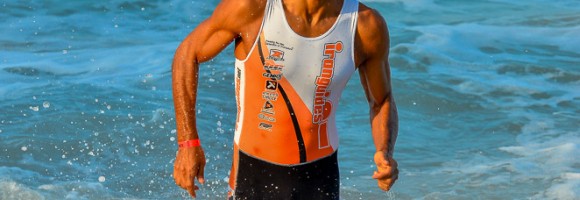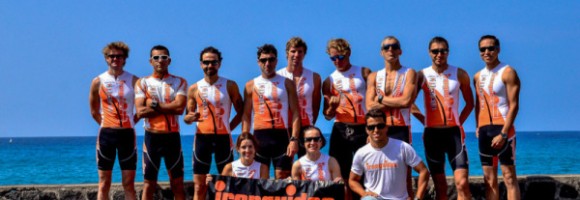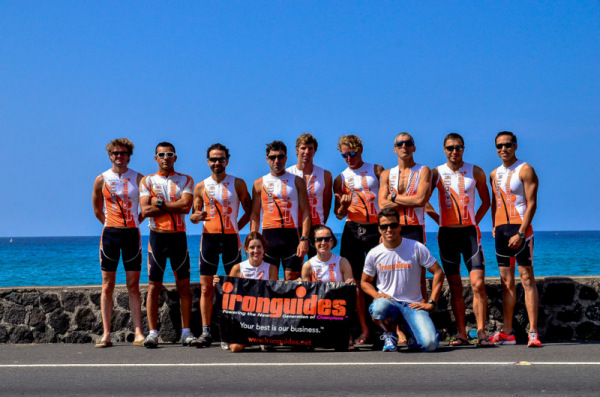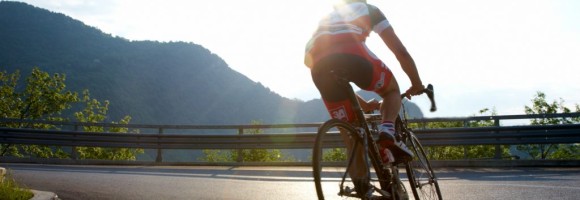When we look at the pro side of our sport over the last 10 years one point jumps out, you simply can’t afford to have a weakness anymore and that point plays particular focus to the swim. In the past there were iconic athletes who always struggled in the swim but were able to use their dominating bike or run performance to bring themselves back into the game, athletes such as Normal Stadler, Thomas Hellriegel and Peter Reid come to mind when thinking about such athletes.
In recent times we have seen the performance level of our pro’s rise and rise to the point we have huge packs coming out of the swim together and heading onto the bike together, so many athletes so close together is changing the dynamic of the race with these packs of riders driving a pace very different to what we have seen in the past with single riders, even if the athletes are legal distance apart the mental advantage of not being all alone on the road is a huge performance booster and is changing the race.
We saw the same thing happen with the ITU short course racing, yes its a different race as drafting is allowed but we see in those races that if you miss that front pack out of the swim the race is over, as a result all the athletes have raised their games and now we see a huge pack all leave the water together.
Every year watching the coverage of Kona we listen to Greg Welch say the very true words that the race can’t be won in the swim but it can certainly be lost.
This dynamic from ITU racing had filtered up to ironman and now it is very rare to find a pro who struggles in the swim and still manages to perform at the top level. When we start looking at the results of the top age group performers we can see the same trend occurring – the top performers are raising their game in the swim and if your not there in the mix out of the water you are putting yourself at a huge disadvantage.
So the hot question is how do we step up our swim performance? My answer is you need to learn to SPRINT!
A top pro swimmer once told me “stop focussing on endurance and learn to swim 200m in 2minutes, then you will never have a problem in the swim again”. These were the wisest words i ever heard and following them did exactly what he promised.
When we look at an ironman swim from a performance athlete we do not see a steady away 3800m swim – what we see is a very very fast 200-300m start and then the athletes settle to a steady pace.
While drafting is banned on the bike it is not banned in the swim and drafting in swimming plays a huge role performance. Just go along to any masters swim sessions and see the athletes frantically pushing off the wall at the start of the interval to get on the feet of the athlete in front even if told to wait the recommended 5seconds – if the athletes are actually waiting 5 seconds you will see a frantic sprint to get on feet of the swimmer in front then all calms down! We have all done this and we all know it makes a huge different, as much as 5seconds per 100m.
So if the athlete at the front of the race can swim an average of 80 seconds per 100m and you can swim 85 seconds per 100m then if you swim alone your coming out the water 3minutes and 10 seconds behind, but if you can get onto the fast swimmers feet then you will swim the 80 second pace with the same effort as the 85s pace you train at.
The next thing that happens is that the fast swimmer is very aware of this fact and does not want other swimmers taking a free ride so will swim a lot faster than their regular 80second at the start of the swim to make sure they take as few passengers as possible on their boat!
Physiology does come into play here though and there is only so far the fast swimmer can push this sprint speed at the start of the swim without sacrificing their performance over the whole race, the distance they will maintain this speed phase is generally going to be around 200m and from that point they will drift into regular race pace allowing the body to recover from the metabolic cost of their rapid start.
So knowing that this is what is going to happen in the swim we need to be building our training around this fact. We still need to be swimming strong, we need good swim endurance as i am sure has been the focus for most of your swims but we need to add a new element to your training and that is sprint speed, we need to be able to start FAST over the first 200m to make sure we can take a free ride on that lead boat for the last 3600m of the swim!
Sprint speed comes from 2 main area’s in our swim training.
Pure Speed – very short intervals with big rests to ensure full recovery – you may have a few or many intervals of this style in a session.
Speed Endurance – a short number of long intervals maintaining close to max effort for 150-300m intervals with long rests.
I am sure a lot of you are thinking we already do that but do you really do that and do you really know why and how to get the most out of these sessions.
As triathletes and especially ironman athletes we tend to think everything is about endurance and going to the pool, sprinting a few lengths and taking long long rests really does not follow our endurance training protocol. We may do our sprints and feel within a few seconds like we could go again but the energy system we are trying to change, the strength we are trying to develop is using a system that will take as much as 3minutes to recover fully and be ready for the next interval. I know many of you are reading this and will have had these sort of sessions in your plan and will have never ever stuck to the required rest interval or anywhere near the correct rest interval as you felt fine and were sure performance was the same on your sprints after you took a few seconds rest rather than your 3 minutes set – and after all less rest means more distance can be covered in the session which is just how we all think as endurance athletes!
The development of sprint strength and speed takes time, the visible gains in the training pool are going to be minute, you have to be patient and stick with the task at hand. Many of you will have been banging away at your swimming for years without seeing any real gains, continue to do that and you are not going to see anything different. Be patient, if you have long rests in your program they are there for a reason, if your program calls for you to swim ALL OUT then thats what you need to do and then take your rest so you can repeat ALL OUT INTERVALS – if you cut the rest short the effort will still be ALL OUT but you will be sacrificing speed and strength as the session progresses and you will not experience the development the session is designed to bring about.
This development of speed is not going to happen overnight, its such a gradual development especially for an endurance athlete but stick with the plan and over a period of a few months and come race day you will blow your old swim performance out of the water, not only will you be much further up the field out of the water but i guarantee you will find the swim both easier and more enjoyable as a result.
ENJOY YOUR TRAINING
Coach Alun “Woody” Woodward
Train with ironguides!
Personalized Online Coaching: Starting at USD190/month
Monthly Training plans (for all levels, or focused on one discipline): Only USD39/months
Event based training plans:
Sprint Distance (USD45 for 8-week plan)
Olympic Distance (USD65 for 12 week plan)
Half Ironman (R$95 for 16-week plan)
Ironman (USD145 for 20-week plan)
X-Terra (USD65 for 12-week plan)
Running Plans (10k, 21k and 42k – starting at USD40)










Recent Comments